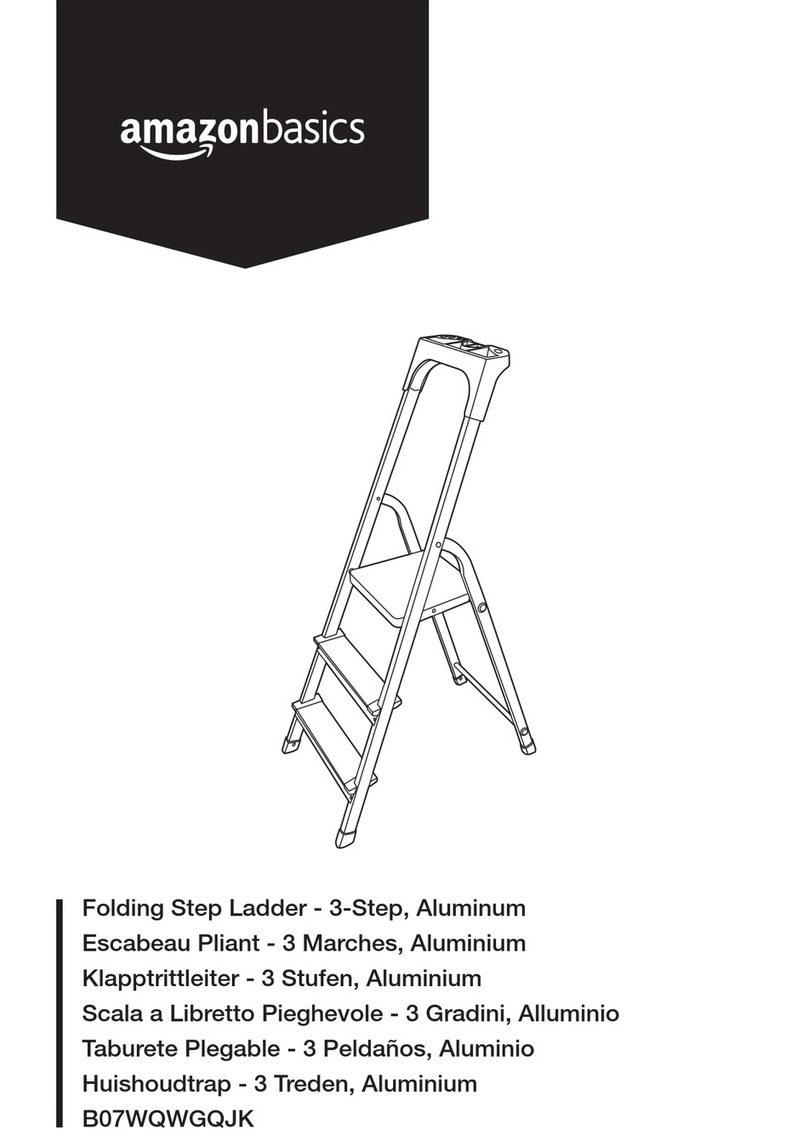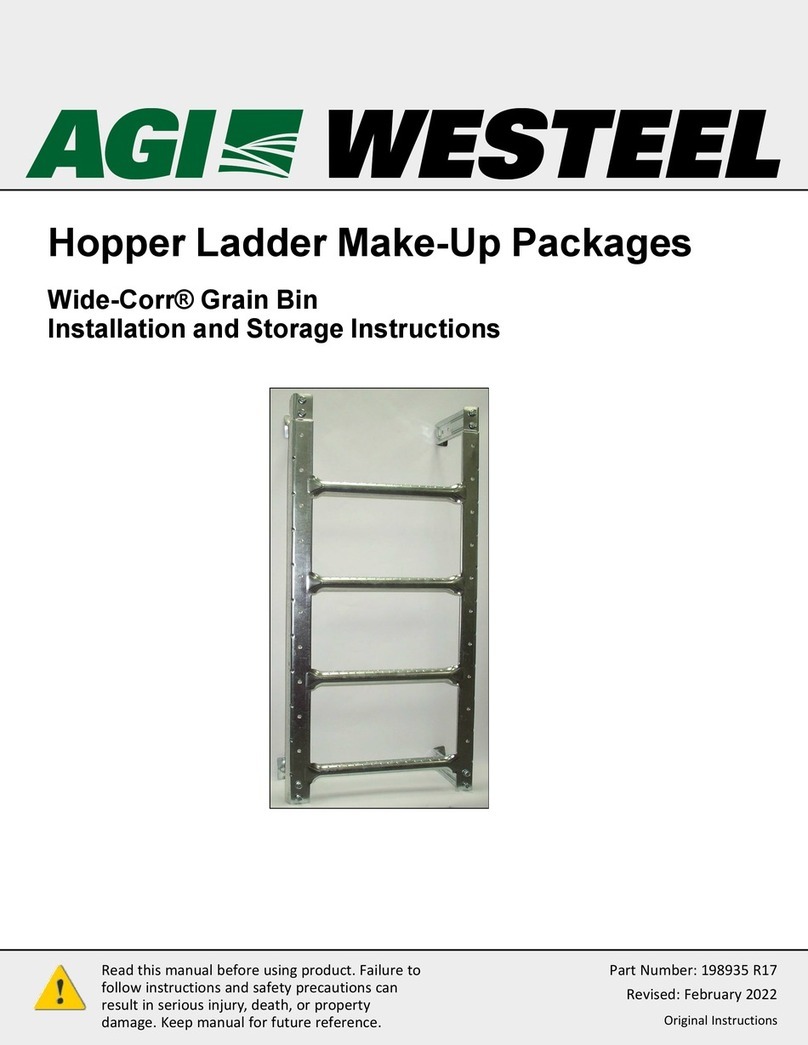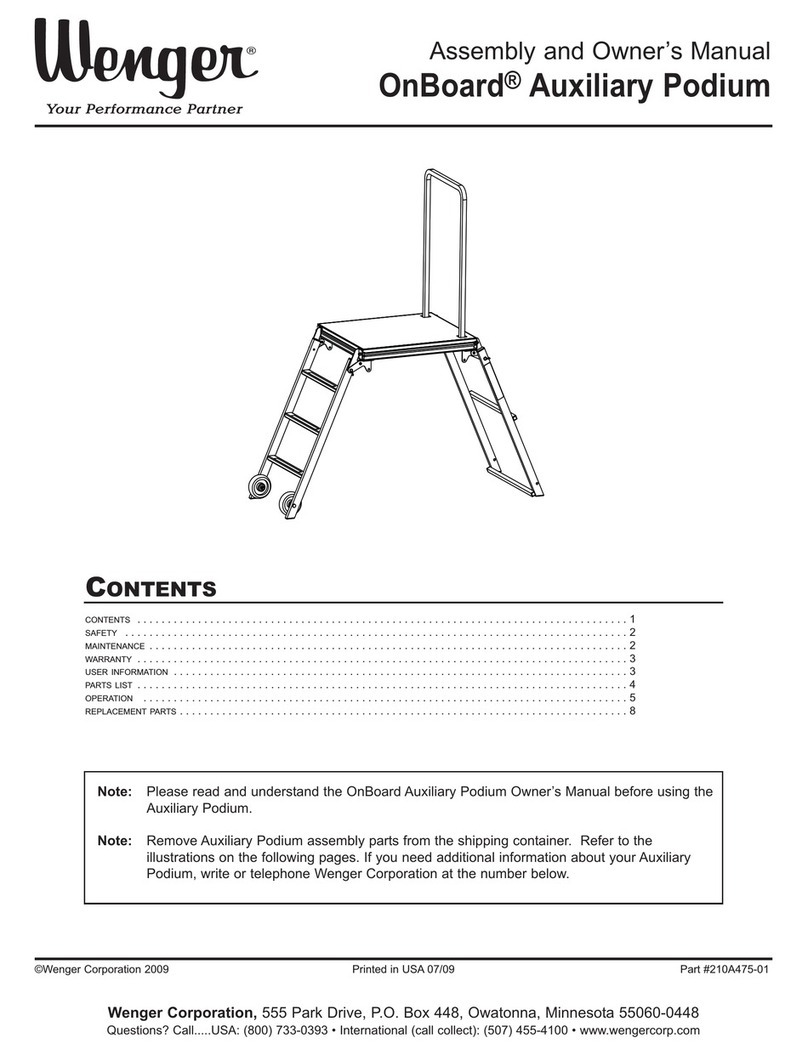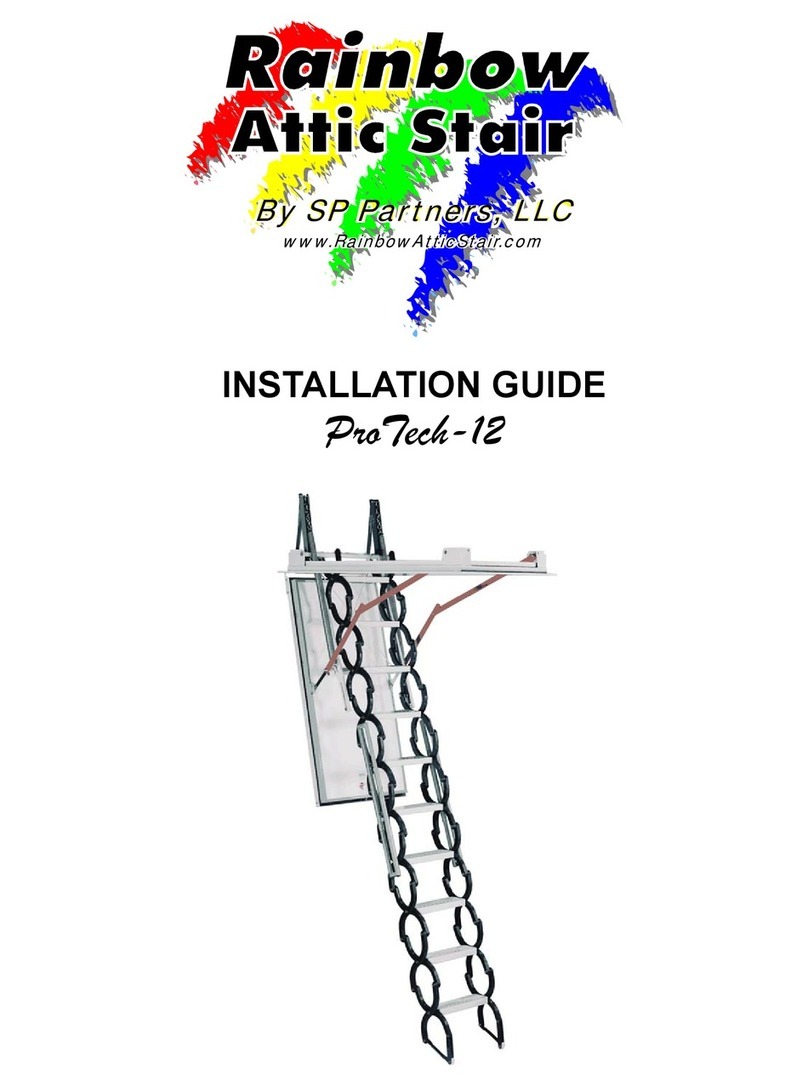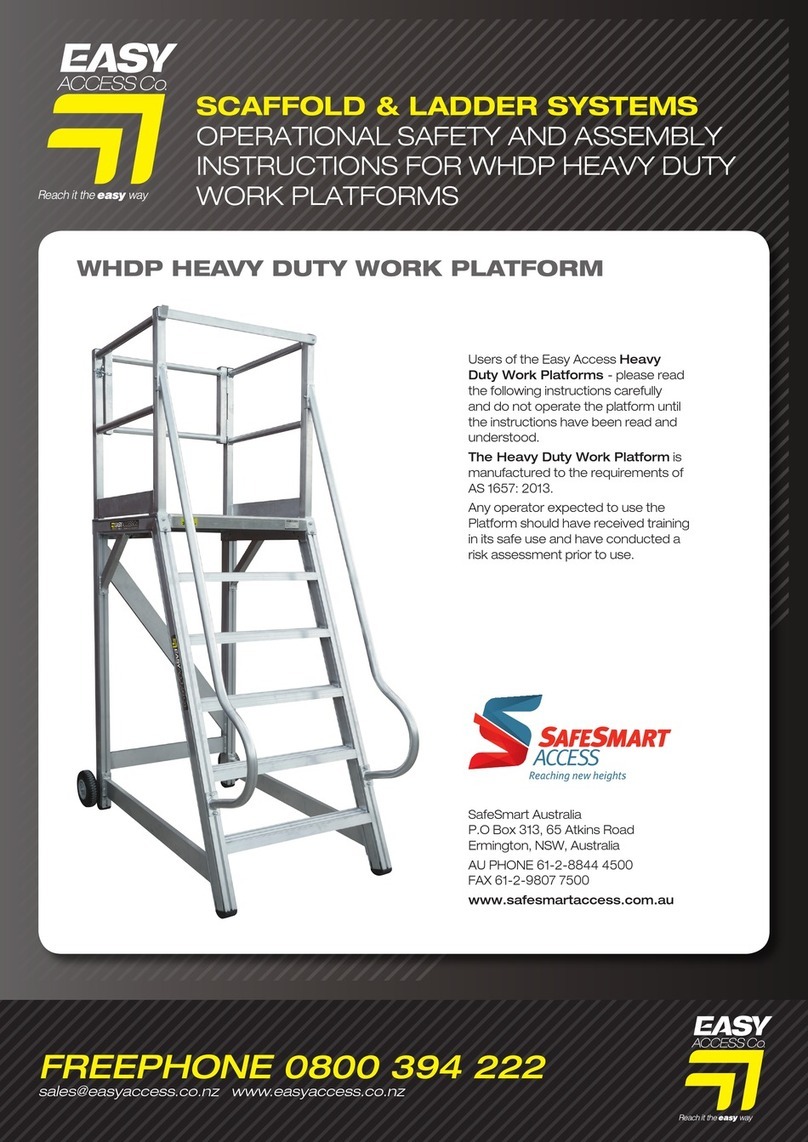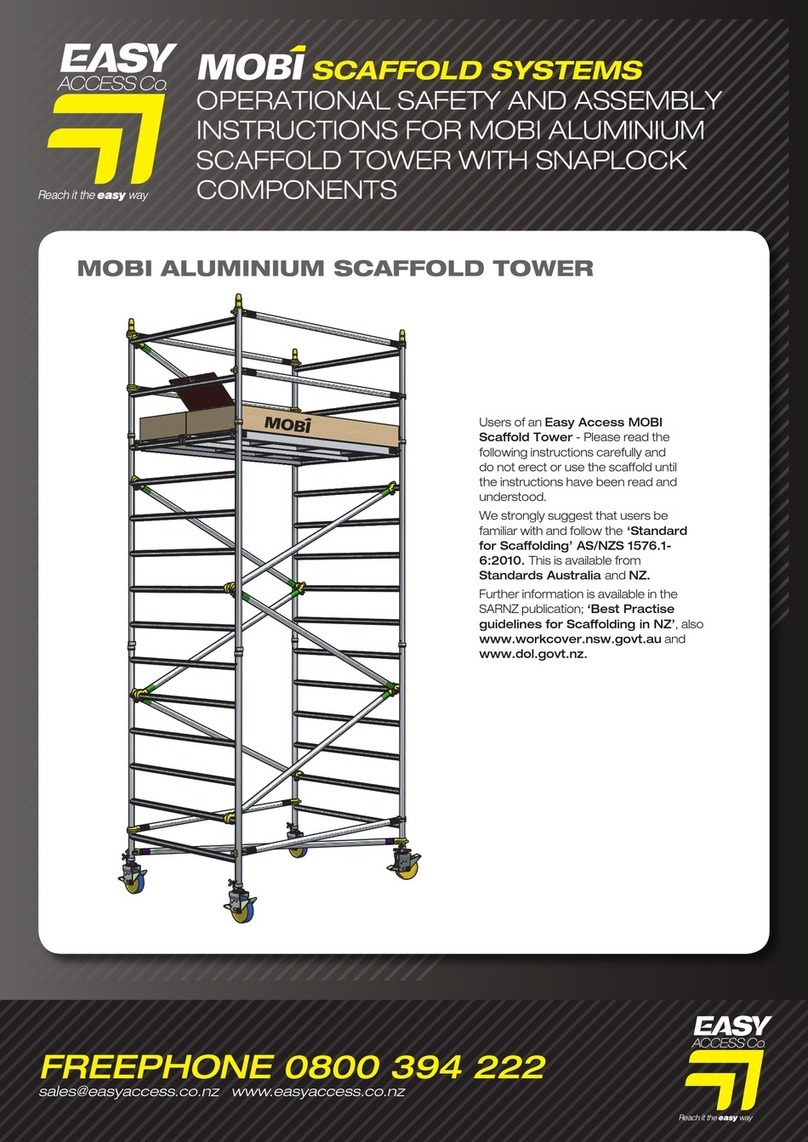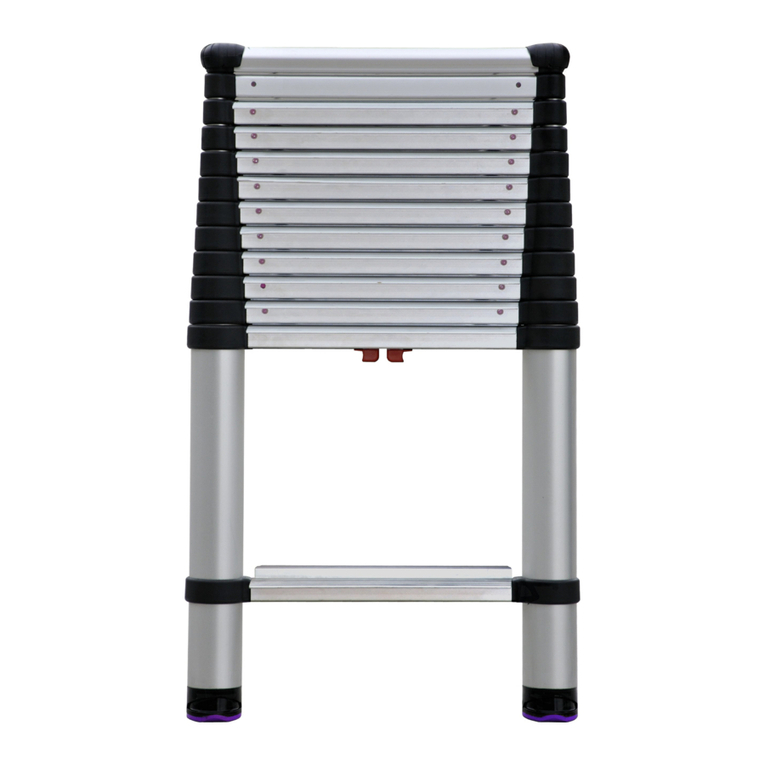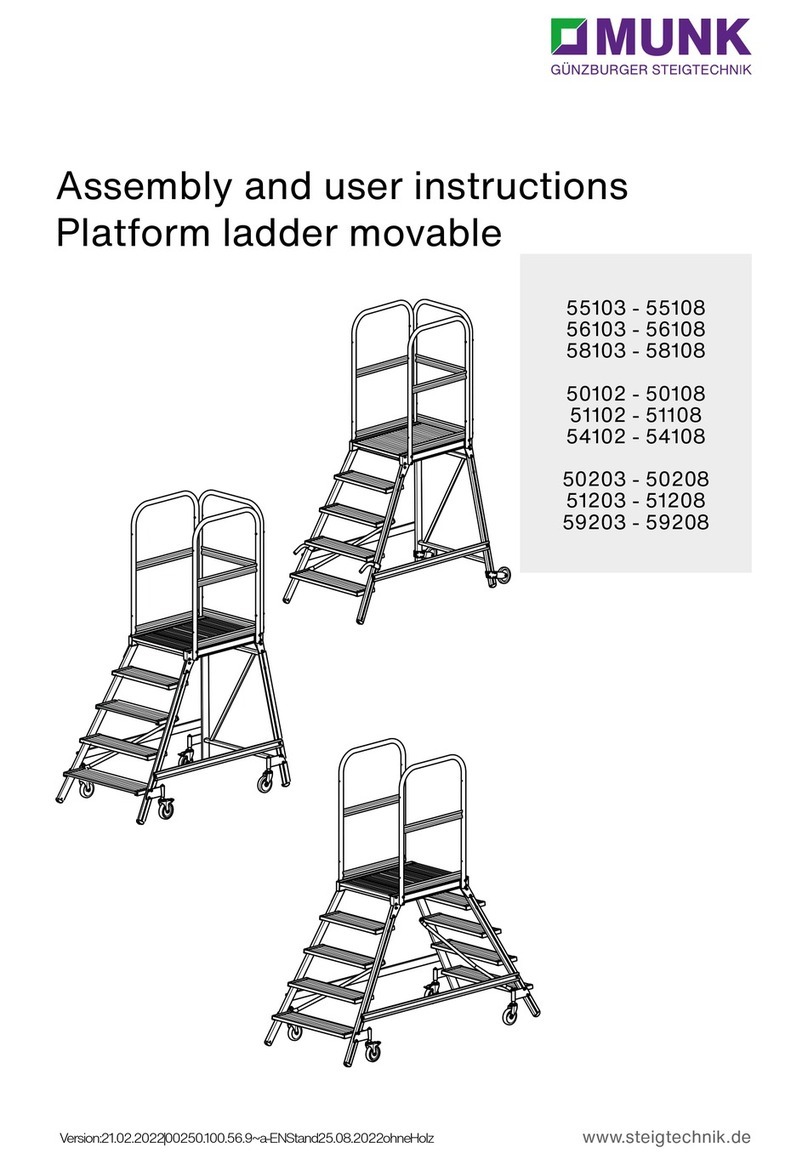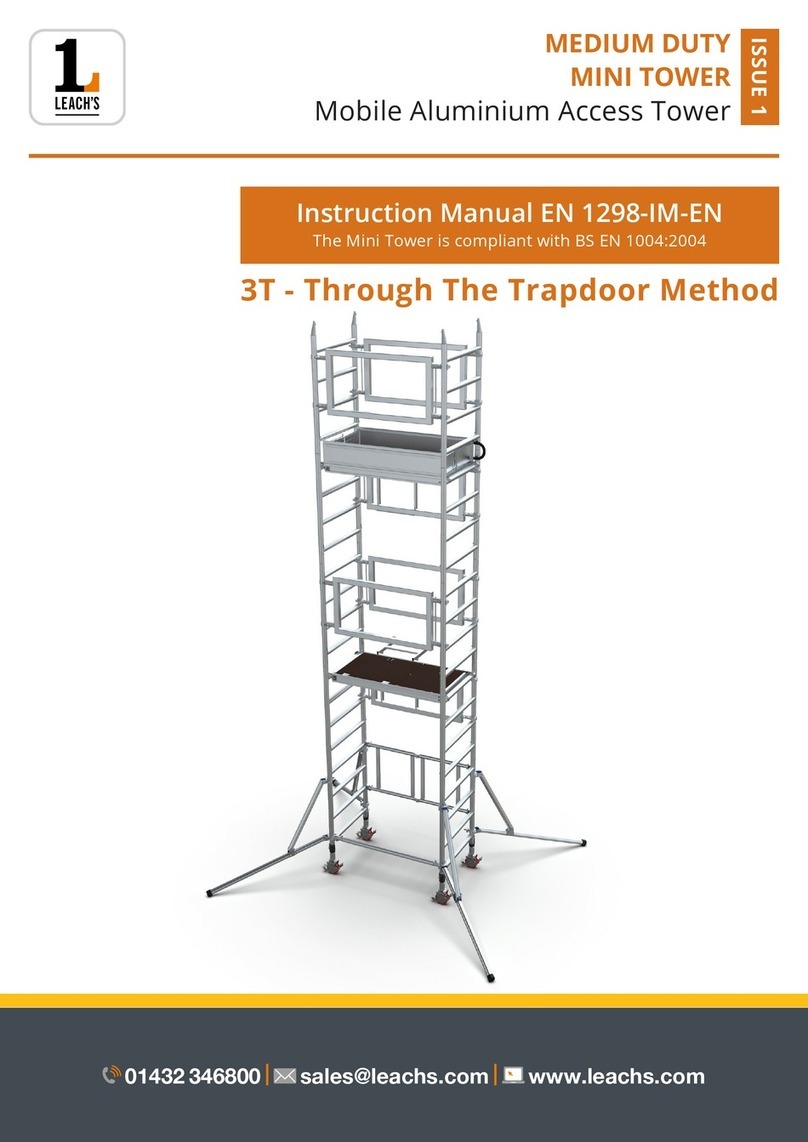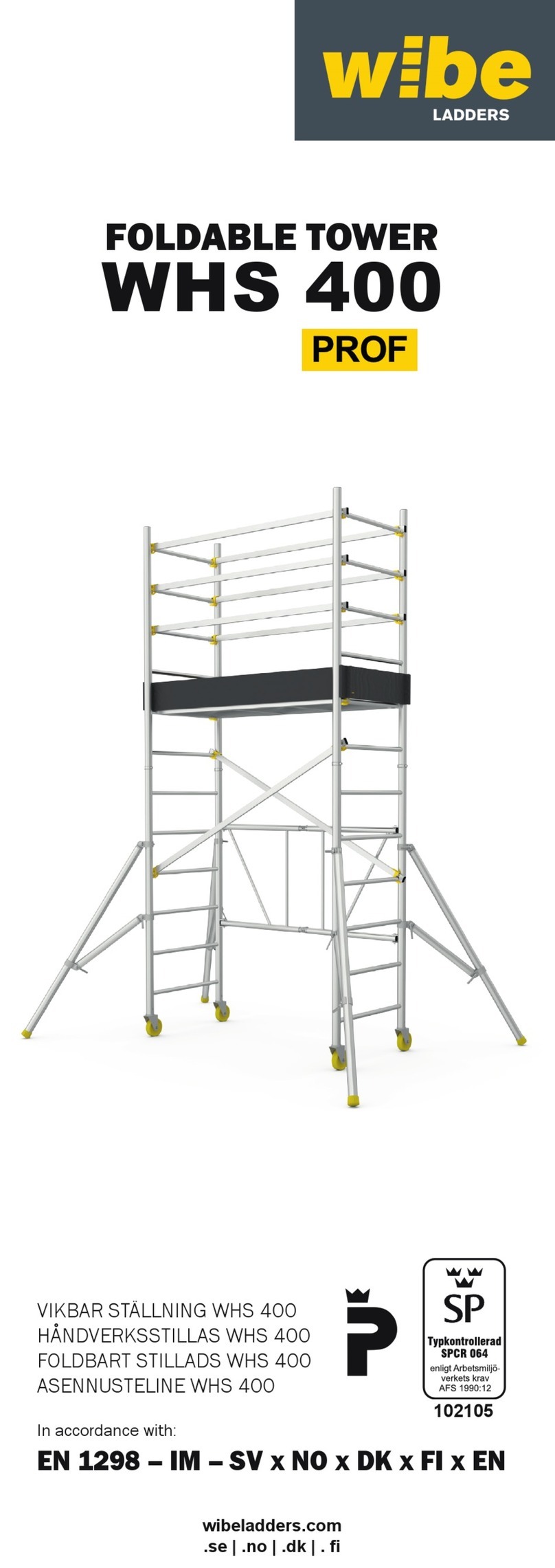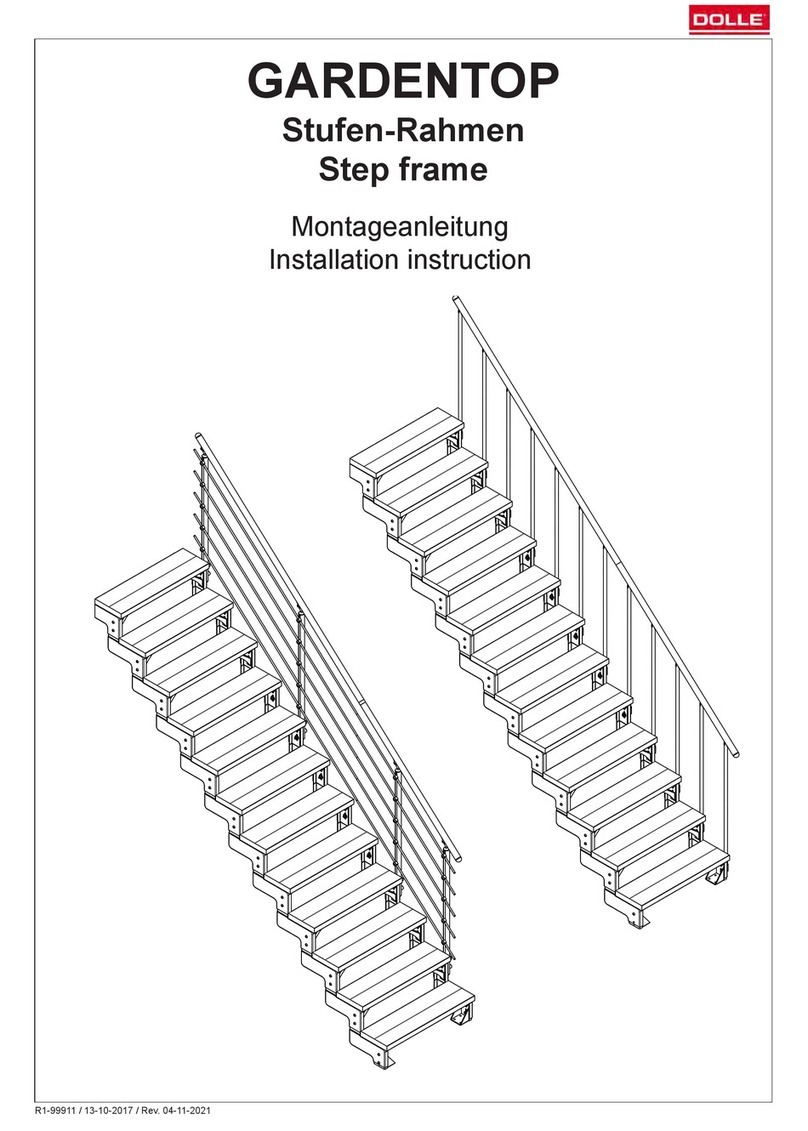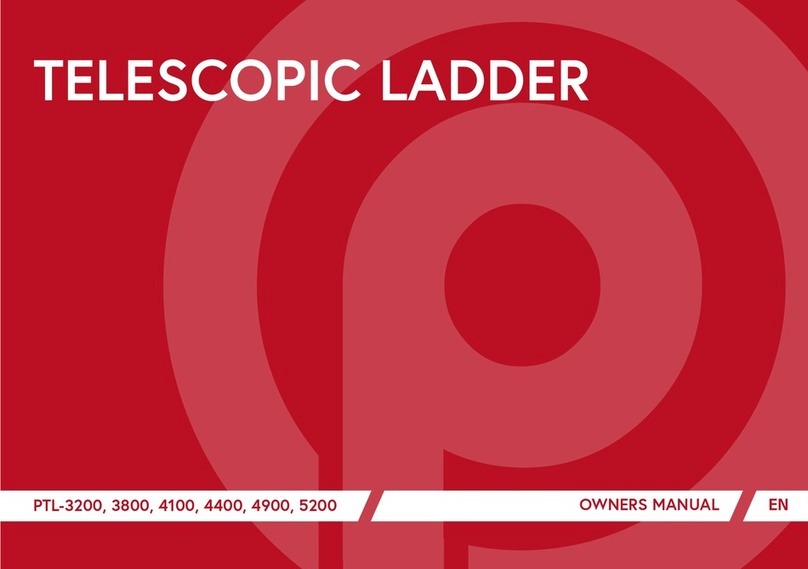FREEPHONE 0800 394 222
The manufacturers or supplier will not accept liability for injury or damage resulting from product failure due to
misuses, abuse, faulty installation and alteration, lack of reasonable care, lack of adequate training, use not listed
under these Operational Safety Instructions or any other failure not related to defects in materials or manufacture.
EXTRA HEIGHT FRAMES
THANK YOU FOR TAKING THE TIME TO READ THESE INSTRUCTIONS, AND FOR PURCHASING THE EASY ACCESS
ATTIC LADDER STAIRWAY.
Tools Required
• Hammer & punch
• Hand or hack saw (for timber or aluminium ladder)
• Portable stepladder or work platform
• Universal square
• Tape measure
INSTALLATION STEPS
1. Ensure you have the required skill level to carry out the installation of the stair. It is advisable to use a professional to
carry out this task.
2. Ensure the stairway is in good condition with all fixings tightened.
3. Ensure the ceiling height is between 2200mm - 2700mm. Locate the installation position of the stairway into the
ceiling, ensuring enough room is allowed to swing the stair down to the floor without coming closer than 600mm to
the nearest wall. The required ceiling opening is 600mm x 1200mm; locate the stair if possible between pair of ceiling
joists.
4. Frame out the 1200mm x 600mm opening with members the equivalent size of the ceiling joists. Remove the
plasterboard ceiling cladding inside the timber surround. Ensure that if any joists are removed that these are replaced
with member of equivalent strength.
5. Nail the timber battens under the ceiling at each end of the opening allowing the battens to encroach 30mm into the
opening at each end. The battens will hold the stairway in place flush with the ceiling while it is being fixed into position
permanently. Slide the stairway up into the roof space and allow it to rest on the battens. Temporarily nail the stairway
from the top to secure it in position. DO NOT USE THE STAIRWAY AT THIS TIME.
6. Fold the stairway down to rest on the floor then permanently nail it into the sides and end joists. Insert packers where
required to ensure the frame fits the opening evenly. Use 4 nails on each side and 3 on each end of the stair frame.
NOTE: 75mm square drive wood screws can be used in place of the nails if desired.
7. Remove the stair base caps and trim the stringers to the correct length using a hand saw. THE STRINGERS MUST BE
IN A STRAIGHT LINE AND THE STEPS LEVEL WITH THE FLOOR. Once the stair stringers are the correct length then
replace the base caps.
8. Attach a moulding of choice to the edges of the stair frame and the ceiling to complete the installation.
9. The hatch lid of the stair can be painted or left as supplied.

